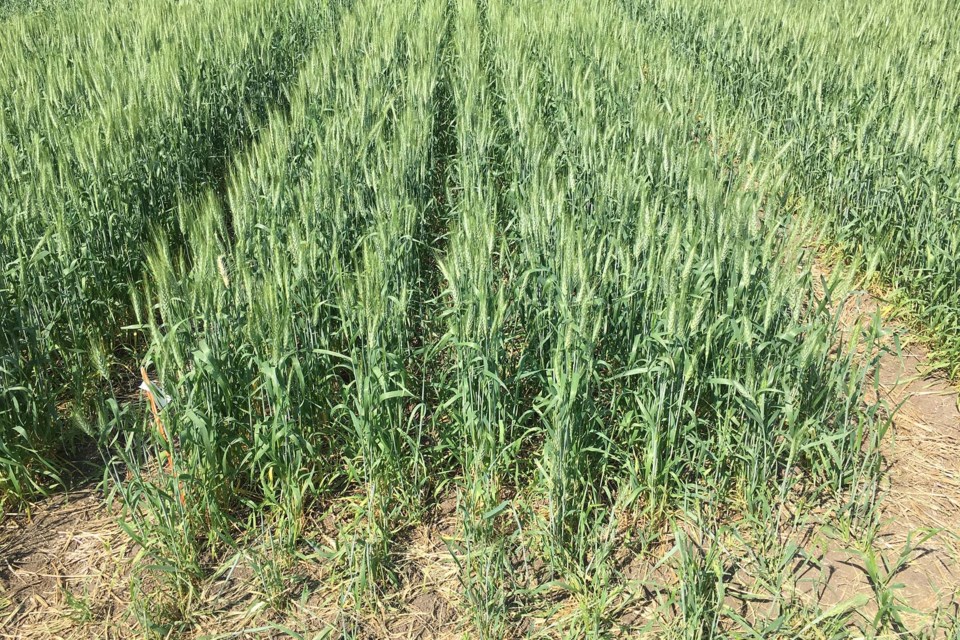Westmoreland Mining put out a notice late last month about the U of A’s humalite research in Sturgeon County.
Humalite is a peat-like form of oxidized lignite coal found about five metres underground in Alberta, said Westmoreland engineer Clay Williams. It’s similar to leonardite, but contains fewer heavy metals. Westmoreland has long mined it as a side business at its coal operation near Hanna and now hopes to ramp up production as markets shift away from coal.
Farmers around Hanna have for many years dumped humalite on fields with the belief that it boosted crop development, said Linda Gorim, the Western Grain Research Foundation Chair in Cropping Systems at the U of A. The province (through Results Driven Agriculture Research) and the Sheerness Mine hired her in May to determine if humalite really does boost crop development.
Plants on acid?
Gorim explained that humalite, which looks like charcoal, contains negatively charged humic acid which can grab positively charged nutrient ions such as nitrogen in soil. Research suggests this prevents nitrogen from being lost to the air or water (where it worsens global heating, harms plants and humans, and contributes to algal blooms) and gives plants more time to absorb it, reducing the need for fertilizer and the greenhouse gases caused by fertilizer production. Unlike manure, humalite doesn’t stink and can be preserved between seasons. Unlike biochar, it doesn’t require lots of clean material to make.
Williams said humalite also holds 20 to 40 times its weight in water, which some Alberta farmers have told him was of considerable help during this year’s drought.
Canada has traditionally imported humic acid extracted from exported humalite and leonardite, Gorim said. Alberta’s humalite is unusually high in humic acid — about 70 per cent, compared to 50 per cent for most other deposits — and low in heavy metals, allowing farmers to skip the exports and get their acid by applying humalite directly to fields.
“We have the best quality humalite in the world, to my knowledge,” Gorim said.
Gorim said her research aims to determine how much humalite farmers should apply to which crops for best results.
She and her team planted 240 test strips of wheat at four sites in Alberta, including the St. Albert research station, each representing a different soil zone. Each strip was treated with different amounts of humalite and fertilizer.
Gorim said the team will test if humalite reduces the need for fertilizer and how, if at all, it affects soil health.
“If we can cut down on the amount of fertilizer we apply, that benefits the environment and the farmer,” she said.
In a press release, Sturgeon County grain and hog farmer Dan Majeau said three years of humalite application to his fields improved his soil’s pH levels, aeration, and microbial activity, and reduced his need for nitrogen fertilizer by 10 to 20 per cent.
“We apply [humalite] in granular and liquid form and have seen better germination and emergence in both cases,” he said.
Fred Niehoff, who farms near Camrose, tried humalite this year on one field and found it produced similar yields to the rest of his farm without as much fertilizer.
“Does it mean it works? It could be,” he said, adding that he wants a few years of results to confirm.
Gorim said her team harvested this year’s crops in late September and will start their analysis in about a month. Future years of the study will examine peas, canola, and possibly potatoes.
Gorim said this research could make farms more sustainable and create jobs.
“This is sitting right here in our ground,” she said, and right next to existing mine sites.
Questions on the study should go to [email protected].




